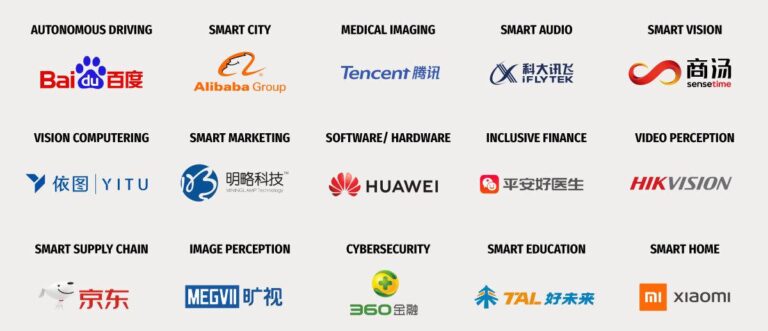Chinese artificial intelligence companies are reportedly circumventing U.S. chip export restrictions by physically transporting hard drives containing sensitive data and software overseas, according to a Wall Street Journal investigation. As Washington intensifies its efforts to curb China’s access to advanced semiconductor technology, these firms have resorted to unconventional methods-namely, flying suitcases filled with critical hardware-highlighting the challenges in enforcing technology controls amid a relentless AI race. This development underscores the ongoing tug-of-war between global tech ambitions and national security concerns.
Chinese AI Firms Circumvent US Export Controls Through Physical Data Transfers
Facing increasingly stringent U.S. export restrictions on advanced semiconductor technology, several Chinese artificial intelligence companies have resorted to an unconventional method of bypassing these controls: physically transporting data via hard drives on international flights. This tactic, confirmed through investigative reports, involves packing sensitive AI training datasets and model parameters into suitcase-sized storage devices, which are then manually carried across borders to domestic research centers. Such physical transfers enable firms to sidestep limitations on cloud and digital transmissions, effectively maintaining the flow of critical information required for cutting-edge AI development.
Key elements of this workaround include:
- Utilization of commercial flights to destinations with less regulatory scrutiny
- Strict packaging protocols to conceal the nature of transported data
- Coordination between multiple teams to ensure timely and secure deliveries
- Employing encrypted hard drives to protect intellectual property during transit
| Aspect | Details |
|---|---|
| Transport Method | Suitcase-sized encrypted hard drives |
| Route Examples | Hong Kong ŌåÆ Shenzhen, Singapore ŌåÆ Guangzhou |
| Data Type | AI training datasets, proprietary model weights |
| Volume | Multiple terabytes per trip |
Security Risks and Regulatory Challenges Arising from Hard Drive Smuggling Tactics
Authorities face growing concerns as the covert transport of sensitive hardware via hard drives exposes critical vulnerabilities in supply chain security. These tactics not only bypass stringent export controls but also introduce complex challenges for customs and border protection agencies tasked with enforcing U.S. chip embargoes. The hard drives often carry encrypted or disguised AI training datasets, intellectual property, and proprietary algorithms, complicating detection and interception efforts. This smuggling method exploits gaps in current surveillance technology, underscoring the need for enhanced real-time data analytics and cross-border intelligence sharing.
From a regulatory standpoint, the phenomenon highlights significant enforcement blind spots. Current export control frameworks struggle to adapt to physical micro-transport methods, particularly when shipments are dispersed across multiple international hubs. The following table illustrates the key regulatory hurdles and associated security risks:
| Regulatory Challenge | Security Risk | Impact |
|---|---|---|
| Minimal physical inspection of consumer electronics | Undetected transfer of restricted technology | Compromised national security |
| Lack of unified international enforcement protocols | Exploitation of regulatory loopholes | Increased smuggling networks |
| Inadequate monitoring of encrypted data within drives | Obfuscation of illicit AI components | Hindered counterintelligence operations |
- Inter-agency coordination remains fragmented, reducing operational effectiveness.
- Legal ambiguities make prosecution of smugglers challenging.
- Technological advancements in data concealment outpace regulatory adaptation.
Policy Recommendations to Strengthen Semiconductor Export Enforcement and Supply Chain Transparency
To curb the creative circumvention of semiconductor export restrictions, a multifaceted approach is crucial. Strengthening customs inspections at key transit hubs, combined with deploying advanced AI-powered tracking systems, can help detect and intercept suspicious shipments before they cross borders. Additionally, enhancing international cooperation frameworks will enable faster information sharing and coordinated enforcement actions against illicit supply chain activities. Robust penalties for companies and intermediaries facilitating these evasive maneuvers must also be enacted to deter future violations effectively.
Greater transparency across the semiconductor supply chain is equally vital. Mandating comprehensive reporting requirements for shipments and end-use certifications will shine a light on otherwise opaque transactional flows. The introduction of a centralized database accessible to regulatory agencies and authorized partners can monitor compliance in real time. Below is a snapshot of key policy tools to consider:
| Policy Measure | Intended Impact |
|---|---|
| Stricter Export Documentation | Enhanced shipment traceability |
| Advanced AI Surveillance Tools | Real-time anomaly detection |
| International Enforcement Coalitions | Cross-border regulatory coordination |
| Severe Penalties & Sanctions | Disincentive for rule violations |
| Supply Chain Transparency Mandates | Improved visibility for regulators |
In Summary
As tensions between the U.S. and China continue to escalate over technology and trade, the innovative yet clandestine methods employed by Chinese AI companies to circumvent chip export restrictions highlight the evolving challenges of enforcing sanctions in a globalized economy. The WSJ’s investigation underscores the complexity of regulating cutting-edge industries amid geopolitical rivalry, raising critical questions about the effectiveness of current export controls and the future landscape of AI development.




